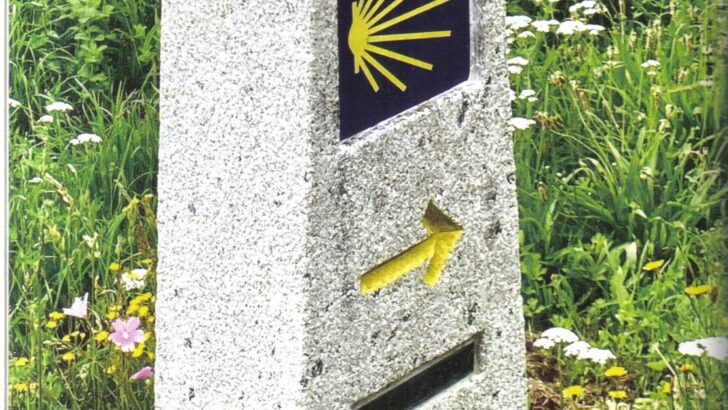Living the Camino Back Home,
by Brendan McManus SJ and Katherine O’Flynn FCJ
(Messenger Publications, €9.95 / £8.95)
Here is a book which can be seriously said to fill a pressing need. Books about the Camino and the experiences of those walking it, for their various reasons – which are not always quite as “religious” as some might imagine or hope — are common enough, and enjoy a popular sale.
In 2023 it was officially reported that some 446,035 pilgrims walked the route: mass tourism indeed. However, the walk is one thing. But what does the pilgrim, of whatever kind, do to keep up the value of the experience on their return home to “ordinary life”?
This is exactly the question that the two authors of this little pamphlet try to address. Both have been involved for years with the Camino Companions, a ministry for welcoming pilgrims to Santiago itself.
The authors’ intention is to provide “Ignatian tips for keeping the Camino spirit alive”. Just how can the experience be relived, its insights maintained, while sitting on the LUAS tram into work, or while negotiating the one way system of Cork city, or even the more difficult task of making one’s way around still divided Belfast. It is a problem.
The authors clearly state that “the book provides food for thought and practical support along with the authors’ own colour photographs of the Camino throughout”, to assist pilgrims to integrate “the Camino feeling” into life at home.
I suspect this has always been a problem for pilgrims. The daily grind allows too little free mental space to contemplate in the ordinary course of affairs. So if you have been on the Camino, or are planning to take the route in the near future, this might be a little book to buy along with those guides that are so common.
Planning in advance what to do in the future after the event is always a good idea, as philosophers have suggested to us for millennia. Buying this book might be the first step in the right direction for many people.
The authors apply themselves to the task of suggesting the ways in which pilgrims can “bring the spiritual learnings and experiences from their Camino journey back home and apply them in their daily lives – the real Camino” – of which the walk is only the symbol.
It makes me wonder though what became of Chaucer’s pilgrims when they returned from Canterbury to their everyday lives in London and elsewhere.
I had forgotten that Chaucer never finished the tales, as he brings his pilgrims only to the edge of Canterbury. It was intended that there would be a set of tales told on the return journey, but these were never written.
Later other writers tried to produce sequels; but these are little read today by anyone bar scholars. But the ambiguities between the often secular nature of the tales and the essential spiritual nature of a visit to the Shrine of Thomas Becket suggests that the conflict that many people must often feel today between the Camino experience and their road to work existed also in medieval times on all pilgrimages, even those in Ireland.
We so often think that times change; but essentially many human experiences remain the same throughout the centuries, especially those which are coloured by faith and spirituality. All pilgrimages, of all kinds, are essentially «unfinished» – there is always more to see, more to learn, more to unlearn.


 Peter Costello
Peter Costello
